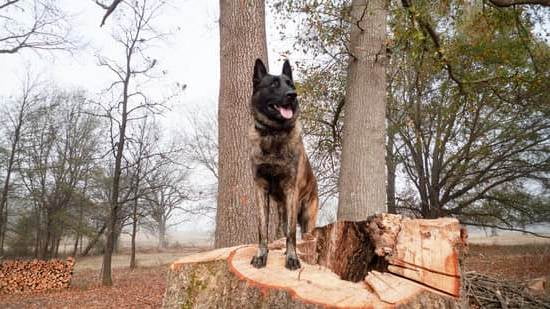Introducing Dog Walking Training Collars
Dog walking can be a lot of fun, but it can also be an overwhelming task. With the use of Dog Walking Training Collars, you can gain greater control over your walks and create a much more pleasant experience for both you and your pup.
These collars are an essential tool for managing a dog’s behavior on walks and provide more tangible guidance than trying to communicate through verbal cues alone. For example, if your pup strays too far from you or is too interested in other dogs during a walk, simply give them a light tug on their collar to indicate it’s time to stay focused and come back to you. Additionally, these training collars provide instant feedback when your pup performs correctly which helps reinforce good behavior.
When using one of these collars it is important to only use basic commands such as “heel” or “no-go” so your pup can clearly understand what they need to do. It is also important to make sure your pup remains comfortable while wearing their collar by checking that the fit is snug yet not overly tight or restrictive. Lastly, start slowly with the use of any dog walking training collar and gradually increase the intensity depending on how well your puppy responds to each level of correction. This will ensure they develop proper leash etiquette while having enough time to process each command before repeating it in the future – new behaviors are best taught in small steps!
The key takeaway here is that with the right preparation and training, dog walking training collars can be very effective tools for improving manners during walks. Not only will this help keep everyone safe when out and about but it will also create better connections between pet owner and pup by building mutual trust and respect!
The Benefits of Using a Training Collar for Dog Walks
Training collars are an invaluable tool for teaching dogs the basics of good leash behavior on a walk. These collars provide instant feedback to dogs so they can stay focused, pay attention, or change direction in response to their owner’s commands. They also offer comfort for owners who no longer have to wrestle with a strong pulling canine amidst the hustle and bustle of the city streets.
The main benefit of a training collar is its ability to provide automatic corrections when the dog pulls excessively on a leash. A light tugging sensation allows dogs to feel their owner’s influence while walking and stops unwanted behaviors like lunging, barking, and fighting with other animals. This helps keep both dogs and owners safe while navigating busy public spaces.
Moreover, training collars help lessen stress levels in anxious canines by allowing them to focus on their owners instead of potential threats or distractions outside their home environment. Some models even come constructed with reflective fabric that increases visibility during low-light situations – making it safer for both pet parents and pets alike!
Exploring Different Types of Dog Training Collars
Dog walking training collars are designed to help you control and manage your dog’s behavior during walks. There are a variety of different types of collars out there, each with its own unique feature set. Here, we take a look at some of the most popular kinds of dog training collars to help you make an informed decision when it comes to choosing the best one for your needs.
Shock Collars: Shock collars provide corrective stimulation via electric shock. The level of shock delivered can be controlled by you from afar and is used in order to curb certain character traits that may endanger you and your pet or disrupt your leisurely walk. Shock collars are often used for more extreme cases where traditional training isn’t effective enough.
Bark Collars: Bark collars come in two forms — static and citronella spray — and they work by sensing excessive barking and delivering a corrected stimulus, either electric shocks or a spray of citronella (mild odorizing fluid) depending on the collar type. This corrective action helps to train your pup not to bark excessively while outside or during walks.
Vibration Collar: Vibration collars are perfect for dogs who don’t respond well to standard stimuli such as verbal commands or mild shocks due their temperament or breed characteristics. Rather than giving them small electric shocks, vibration collars gently vibrate every time undesirable behavior is displayed as an alternative form of reprimand to discourage such actions from being repeated in the future.
Harness-Style Collar: Harness-stylecollars offer an alternative way of preventing dogs from pulling excessively on their leashes without relying on electric shocks or other unpleasantness tactics. As the name implies, these collars fit snugly around their body like a harness rather than around their neck, which prevents them from putting pressure on their throat when tugging against the leash too much.
Fitting the Right Collar Size for Your Dog
It is essential to fit your dog’s collar correctly for maximum comfort and safety. The collar should fit snugly on the neck and not be too tight or too loose. When measuring for the correct size, use a flexible measuring tool and measure just below the area where your dog’s neck meets his shoulders. Make sure you can slip one finger between the collar and your dog’s neck. Additionally, you should ensure that you have enough room to be able to add two more fingers when properly fitting a dog walking training collar on your pup.
When looking for the right type of collar for your dog, remember that select materials such as leather may stretch over time, so you should go slightly smaller at the outset than what is suggested by measuring guidebooks or other resources. Additionally, if possible, cotton webbing collars are preferable since they are adjustable and do not wear so quickly. As with any purchase–especially those associated with pet care–you want to look for quality products such as metal buckle collars which are metal plated and rust resistant as well as anti-allergenic options if your pup has sensitive skin. Finally, in order to put protection first while walking outdoors in unpredictable weather conditions consider purchasing a coat or waterproof collar with windproof capabilities. These additional features provide extra insulation and protection from environmental elements like rain and snow keeping both you and your pup dry during long walks.
Tips for Successful Dog Training with a Collar
1. Choose the right collar for your dog’s size and age: Different collars are made for different types of dogs, so make sure you choose one that is appropriate for your pup. Look into features like adjustable straps and materials like nylon or leather for durability. Also consider features like removable shock pads, multiple levels of correction, and timer-controlled sound options in order to tailor it to your dog’s specific needs.
2. Make sure the collar fits properly: If you’re unsure about how to fit a collar correctly on your dog, consult with a professional trainer who can give you advice based on the type of collar and your breed of pup. It should be snug but not too tight so as to not cause discomfort for your pup.
3. Establish a daily walking route: When training with a collar, it is important that you stick to the same exact routine each day or week so that it becomes second nature to your pet. Have them wear the same collar while they follow this route every time they walk with it on. This consistency helps create respect between yourself and your pup and allows them to understand what behavior is expected while they wear their collar.
4. Include breaks during walks: While continuing consistent walks with an evenly-fitting collar is key in training, there should also be scheduled breaks in which you can take off the collar entirely and let them run around or even just sit outside without restriction for a set amount of time each day according to whatever schedule works best for both of you — no distractions or corrections here!
5. Reintroduce new commands slowly: Be patient when introducing any new commands when first utilizing a training collar — start off slow by beginning with commands such as ‘sit’ and ‘stay.’ If new commands are more complex than these basics ones, break each into smaller stages before expecting complete obedience from your pup – once they understand one aspect clearly then add another step afterwards until finally achieving total obedience objectives with ease!
Picking the Appropriate Collar for Your Dog
When it comes to picking an appropriate collar for dog walking training, there are a few factors to consider. The size of the collar should be considered as different breeds have different sizing for outerwear. For puppies and smaller breed dogs, look for a lightweight collar that won’t weigh them down but is still sturdy enough to support the basic lead. For larger or stronger dogs, you may need something sturdier that can handle their strength, like strong nylon fabric or leather collars reinforced with steel buckles and rivets.
Some people also like to use specialty walkers for multiple dogs at once, such as martingales or group leashes. These types of collars have several loops on a single piece of rope or strap which allows the handler to manage many dogs at one time without getting tangled up in excess leashes. Front-clip harnesses can be helpful in teaching conditioned walking behaviors, too—the leash clips onto the front of the harness so when your pup starts pulling they feel a slight “reinforcement” on their chest promoting better leash manners from the start. Be sure you’re aware of any safety concerns when using specialized collars or harnesses before letting your pup run free!
Conclusion
Dog walking training collars are an essential tool for owners who want to take their beloved pup on regular walks. Training collars can be used to teach a dog how to walk properly on the leash and obey commands such as “heel” and “stay.” Training collars come in a variety of shapes and sizes that suit every kind of canine. They also offer different levels of correction, ranging from mild vibration to shock stimulation, which allows you to decide what works best for your particular pup’s needs. By using training collars regularly as part of a comprehensive training program, owners have seen improved walking behavior in their pups—providing more enjoyable outdoor experiences for both the pet and human companion. Additionally, with proper training, most dogs can learn to walk calmly in just a few weeks or even days. As a result, it’s no wonder that professional trainers often recommend the use of training collars as a necessary tool for happy walks.
Whether you opt to enroll your furry friend in obedience classes or prefer to trainFido at home alone, these tools are immensely helpful when teaching / reinforcing desirable behaviors on the leash such as maintaining an appropriate pace and orientation towards handler / putting distance between being pulled away by distractions or other dogs). Training collars should always be used with patience, consistency and plenty of positive reinforcement (such as verbal praise, treats or playtime) so that your pup learns early on that coming when called is rewarding! With these tips in tow, all dog owners are sure to enjoy many long and delightful outings with their loyal companions.

Welcome to the blog! I am a professional dog trainer and have been working with dogs for many years. In this blog, I will be discussing various topics related to dog training, including tips, tricks, and advice. I hope you find this information helpful and informative. Thanks for reading!





